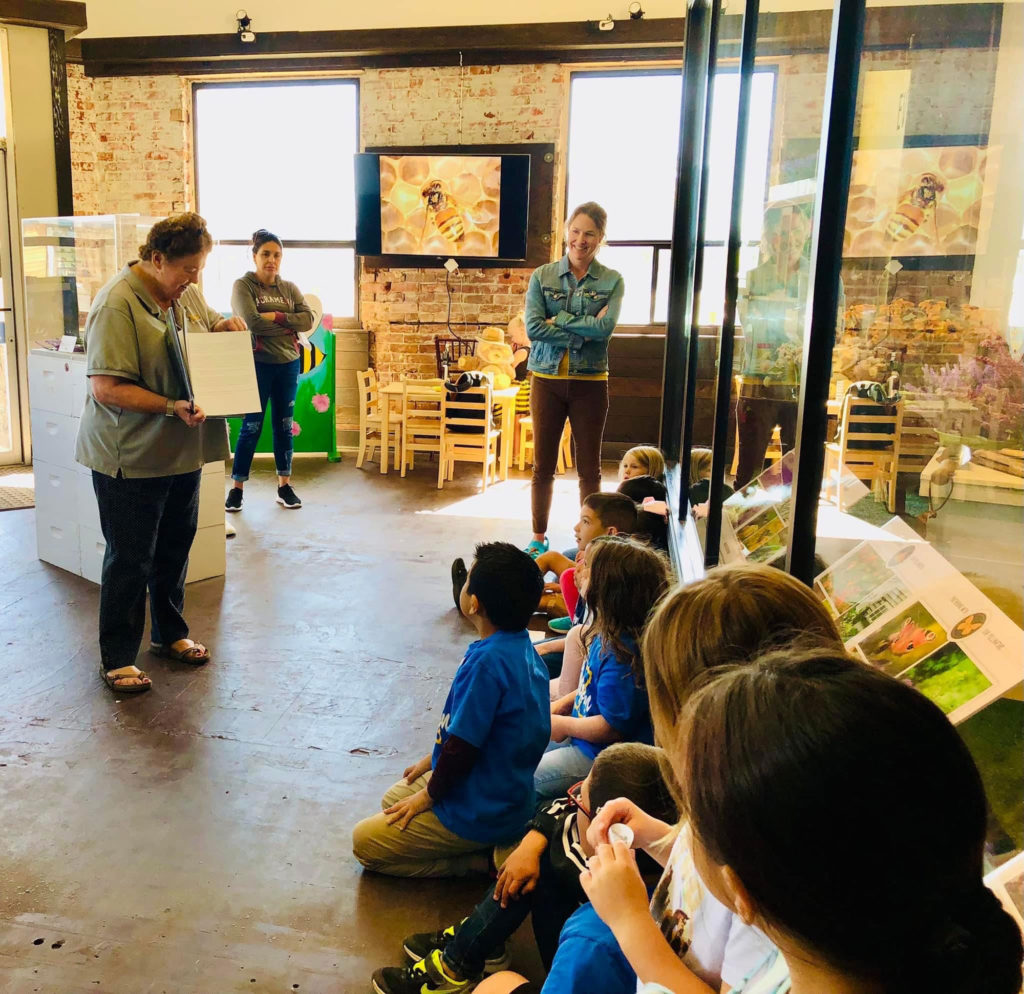What’s All the Buzz About? How Your Family Can Help Save The Bees
Bees around the world are struggling for their survival as a result of threats from agricultural expansion, loss of habitat, disease, pollution and climate change. In fact, more than 40 percent of native bees are facing extinction. That’s hundreds of different types of bee species!
Over the last three years, more than one in three honeybee colonies in the United States has died. Without bees pollinating throughout our ecosystem, many wild plants and crops would be unable to thrive. Although bees are the world’s main pollinators and we all depend on them for survival, they continue to be largely ignored and under-protected.
We can bring awareness about bees to our children and community by celebrating World Honey Bee Day held every August. Held this year on Saturday, August 20, the event began in 2009 with a group of beekeepers who petitioned for a formal proclamation by the United States Department of Agriculture to honor honey bees and beekeeping.
This special day brings together beekeepers, bee associations, and other interested groups to build community awareness of the bee industry through education and promotion. It is an opportunity to celebrate honey bees and recognize their importance to our everyday lives and the global environment. National Honey Bee Awareness Day continues to be recognized each year on the third Saturday of August.

Beekeeper and retired educator, Laurel Hill-Ward teaching second graders about pollinators at the Honey Bee Discovery Center in Orland. An important component of what we do at the center is to educate our visitors on how they can be a part of the solution to help save the bees. There’s so much to discover and learn at the center!
Bees are vital to our natural environment
Bees may sometimes seem like a nuisance, but they are actually a cornerstone of our natural environment because of their ability to pollinate. They travel from one plant to another carrying pollen on their bodies to transfer genetic material necessary for most flowering plants to reproduce. Without flower pollination by bees, our agricultural system, food supply, and landscapes would disappear.
Amazing honey bee facts:
- The honey bee is the only insect that produces food eaten by humans.
- Honey is the only food that does not spoil.
- Bee pollination is responsible for more than one-third of the food we eat. They pollinate 80 percent of the world’s plants, including 90 different food crops.
- Bees help produce $15 billion in US agricultural crops each year and $217 billion globally.
- There are more than 20,000 bee species around the world.
- Bees support healthy ecosystems that clean the air, stabilize soils, protect from severe weather, and support other wildlife.
How you can help save the bees
- Support farmers and beekeepers by buying local honey and locally grown organic foods. Your children will love sampling all the delicious varieties of local honey.
- Plant an organic garden that does not use pesticides. Grow lots of pollinator-friendly native plants. Check out these plant ideas from Honey Love, honeylove.org.
- Provide a water source in your yard since honey bees need clean water to drink.
- Rescue bees instead of exterminating them. If you see an active beehive, call a live-bee removal and rehoming service in your area. Honeybees can be safely removed and taken to beekeepers or community bee yards.
- Teach your children about bees. Read books about bees and pollination such asThe Bee Book by Charlotte MilnerThe Beeman by Laurie Krebs, The Magic School Bus Inside a Beehive by Joanna Cole, The Buzz on Bees: Why Are They Disappearing? by Shelley Rotner, and UnBEElieveables by Douglas Florian. Also, be sure to watch Bee Movie, which shows what happens when we no longer have bees pollinating vegetation.
- Support organizations that are working hard to research and solve the bee crisis. Consider sending a donation to any of these organizations: HoneyLove, Pollinator Partnership, Honeybee Conservancy, Planet Bee Foundation, Natural Resources Defense Council, and Green Peace.
- Spread the word about the importance of pollinators to your family and friends.
Let’s keep the buzz about bees going all year long!



Leave a Reply